|
The benefits of experiencing, learning about, and playing music don’t end with childhood. Not only does music enhance the lives of all adults, but it plays a major role in strengthening the cognitive abilities of seniors in particular. Scientists—and music teachers—have long understood that music stimulates parts of the brain responsible for higher mental and emotional functions. Here is an outline of how that works: 1. Greater mental acuity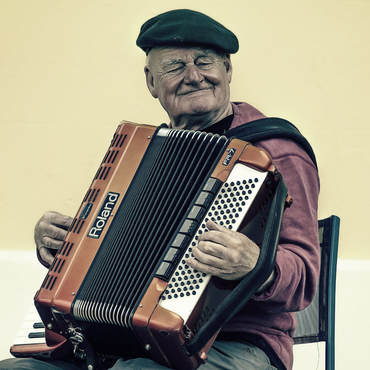 The early benefits that accrue from studying a musical instrument can make your brain more resilient over the course of your life. These benefits have even been shown to help people overcome multiple deficits that come with normal aging. Older adults who played a musical instrument during their childhood tended to hold onto the early gains in brain functioning. A study conducted by the Emory University neurology department demonstrated that seniors who played a musical instrument for at least 10 years scored higher on tests of memory and general intellectual ability than did their counterparts who did not have any musical training. When older adults take part in music and arts programming, they also experience improvements in their overall physical and social health. This participation strengthens their sense of being part of a community, their ability to form bonds with others, and their sense of personal identity. And when seniors participate in creating music or even in listening experiences, they also tend to experience more satisfaction with their quality of life and well-being. Music lessons may also play a role in preventing some aspects of physical aging. One group of researchers found that senior musicians’ auditory cortexes—the part of the brain involved in the sense of hearing—did not age as much as those of their non-musical counterparts. These seniors were therefore less likely to experience hearing loss with age. Experts point out that even for those who begin musical training far beyond childhood, similar benefits can occur. 2. Improved memory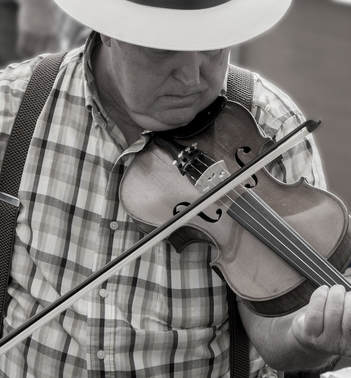 In one recent study at the University of California, Irvine, researchers determined that after listening to classical music, adults with Alzheimer’s disease showed improvements in their performance on memory tests. Another study showed that older adults between the ages of 60 and 85 who took half-hour piano lessons every week and practiced for an additional three hours demonstrated significant gains in their ability to memorize and assimilate information after only a few months. These older adults went into the study with no prior serious musical experience. Additional research has shown that background music had a positive effect on older adults’ memories. This held true for both semantic memory—dealing with facts—and episodic memory—dealing with personal experiences—as well as for the ability to rapidly absorb and understand new information. In this study, the test subjects were adults who were not musicians and who had a mean age of 69 years. In the study, researchers used recordings of pieces by composers Mozart and Mahler, and introduced a white noise control segment and another control segment without music. They tested the subjects’ performance for each of these four segments, with the musical pieces and the white noise played as the background both prior to and during tests that included memorizing lists of words and creating as many words as possible beginning with a particular letter. By listening to both Mozart and Mahler, seniors demonstrated improved performance on examinations of semantic and episodic memory. Mozart, in particular, fostered an increase in the speed of mental processing. On the other hand, Mahler did not seem to aid in mental processing speed over the white noise or the “music-less” segments of the test. One reason why the seniors performed better while listening to Mozart may be that they identified the composer’s music as being more conducive to feelings of happiness. They found Mahler, an early 20th century composer noted as a pioneer in the incorporation of massive dissonances in his music, to be sadder in tone. The researchers theorized that when their test subjects felt happier, their speed of mental performance increased. They also noted that the pieces by both composers used in the test lacked lyrics and theorized that the distraction of listening to lyrics during the testing might have impaired memorization. 3. Reduced stressParticipation in music-related activities has also been shown to decrease stress levels in adults. An analysis of hundreds of studies has demonstrated music’s ability to reduce feelings of depression and produce a more calm, focused state of mind in adults of all ages. When adults listen to a musical performance or play music themselves as part of a group, their levels of the chemicals oxytocin and dopamine tend to increase. Oxytocin in the body promotes feelings of trustfulness and closeness to others, while increases in dopamine levels are associated with better concentration and a general elevation in mood.
Other research even finds a correlation between listening to music and experiencing a reduction in pain. For example, in one study, adults demonstrated a reduction in chronic pain symptoms by more than 20 percent and in feelings of depression by as much as 25 percent when listening to music. Over the years, numerous educators and other experts have weighed in on the importance of music education to the intellectual, emotional, and social development of young people. Yet the depth and breadth of music education programs as part of the standard school curriculum varies significantly from one nation to another. Following is an overview of the state of music education in selected countries and regions around the world. ScandinaviaThe Scandinavian countries—Denmark, Norway, Sweden, and Finland—offer robust music education programs both in and out of the classroom, all supported through government funding. One example of this commitment to music education is the fact that Finnish instructors training to teach the subject receive 350 hours of government-supported education. Finland’s commitment to music education is also notable in that it blends the great music teaching traditions of the Russian and Hungarian educational systems with the full complement of financial support available through the modern Finnish democratic social welfare state. Finnish music programs integrate the teaching of the subject closely with other academic disciplines with a focus on quality. Music teachers and students also enjoy the advantages that come with Finland’s long-standing respect for the value of music and art. Young children study music as a form of play and exploration within a systematic curriculum that has earned worldwide renown. South Korea
AustraliaAustralia offers an example of how a national music education program can look when there is inconsistency in funding and support for it. One study, administered under the auspices of The Music Trust, an organization that advocates for better music education programs, found that more than 60 percent of the schools that responded did not provide access to music education. Of the schools reporting that they did offer it, less than one-quarter of government-run schools were led by teachers with specialist qualifications in music. The figure is at variance with that of privately supported schools, of which 88 percent of the music programs were taught by specialist instructors. Australian music education typically focuses on developing students’ general knowledge of the history and practice of music, as well as the ability to express themselves creatively within a musical tradition. Moreover, there is an emphasis on the country’s own musical traditions of the past and present, including those of the Aboriginal people. In order to increase the quality of Australian music education, a national organization for teachers of music has initiated a government-supported program designed to narrow the gap between private and state-run schools. The program aims to expand the ability of music teachers to obtain ongoing professional development through a mentoring program. CanadaMusic education in Canada, like that in the United States and the United Kingdom, presents an inconsistent picture in that the level of commitment to it can vary widely from one school district to another. For example, more than one-third of Canadian schools responding to a recent survey reported that they either had no music program or had one taught by instructors without any background in the subject. Canadian experts have pointed to several roadblocks that stand in the way of further development of the music curricula, including a lack of funding and qualified teachers, as well as time to develop music programs properly. As in the US, parent groups often hold fundraising events to support their schools’ music programs. Additionally, Canadian schools typically emphasize the development of music listening skills for younger elementary students, the expansion of the curriculum to include learning performance skills, and visits to local musical performances for older students. The United KingdomIn the UK, financial constraints can also be a problem. Yet recent progress includes a 2012 nationwide government initiative that established more than 100 hubs for music education to provide more than 1 million students with the opportunity to use musical instruments. Critics of the UK’s music education programs have noted that the emphasis on learning to play an instrument takes up most of the average student’s time. Consequently, few students actually study music theory, music history, or the role of music as a vital cultural product. United StatesAs in the UK and Canada, many public school districts in the US are inadequately funded. And when budgets do need to be cut, music and arts education are often the first programs to be discontinued.
Parents and music teachers are well aware that their fundraising efforts are often the most significant factor in determining whether their schools can offer a high-quality music program—or any music program at all. For musicians, buying an instrument is an exciting—if slightly stressful—process. While many people choose to shop for instruments at brick-and-mortar stores, modern technology provides musicians the alternative of buying online, which offers the benefit of a wider variety of choices and more competitive pricing. Musicians who are thinking about using an online retailer to purchase their next musical instrument should take the following steps to enjoy the best possible experience. Set a budget and choose a style Similar to what one would do when buying an instrument from a physical store, individuals should begin the process of buying an instrument online by establishing a budget. Great gear can be found at all price ranges, and one of the best aspects of buying online is that musicians are likely to get more value for their money. Strong competition between online retailers typically creates lower prices than those found in brick-and-mortar stores, so musicians’ budgets are likely to get them better-quality instruments online. Once a budget is established, it’s important for shoppers to conduct thorough research before settling on a specific brand, style, and model within their price range. Specific preferences will make the process of finding the right instrument at the right price online easier, as the Internet offers significantly more options than one would find when buying from a physical store. When deciding on an instrument to buy online, it’s important for musicians to pay attention to the small details that may not have occurred to them if they were purchasing the instrument in person. For example, when buying an item such as a digital piano, one should make sure to research specific characteristics such as key action, which will dictate the degree to which playing a digital piano feels like playing a standard instrument. Alternatively, when purchasing an instrument such as an electric guitar, it’s important to research features like neck shape and fret size, which will affect how a musician plays. Find the right retailerOne of the most important things for musicians to consider when purchasing an instrument online is the reputation of the company that they buy from. While there are a variety of reputable online music marketplaces to meet the needs of musicians at all levels of experience, the following are among the three most popular options, with each one offering its own distinctive benefits. 1. Sweetwater In operation since 1979, this company is known for its customer service. People who choose to buy their instruments from Sweetwater are set up to work with a specific sales engineer for all of their music gear needs, and every employee at the company is trained to handle any questions that customers may have about their instruments. Sweetwater is a great option for musicians who want the same level of support that they would receive when shopping at a brick-and-mortar store. The company also offers free shipping in one to five days throughout the contiguous United States, depending on where the buyer is located, along with a wide range of financing options. 2. Musician’s Friend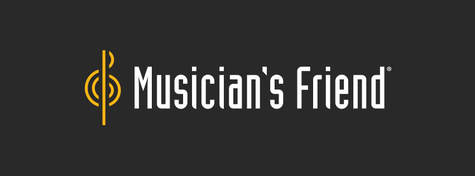 The company, which began operating out of garage in 1983, now ships between 9,000 and 10,000 orders per day from its distribution center in Kansas City, Missouri. The company offers free ground shipping to 48 states plus Washington, D.C., and boasts a catalog of over 1.7 million music items. As an additional bonus, Musician’s Friend offers price matching for new instruments bought from authorized American dealers for up to 45 days after an instrument is purchased, which makes the company a great choice for musicians looking to purchase on a tight budget. 3. Guitar Center While Guitar Center is more widely recognized as a brick-and-mortar retailer, the company also operates as an online marketplace and offers its customers an array of benefits. Guitar Center’s online services include international shipping options, a pro coverage policy that protect instruments in the event of damage, and the ability to ship to stores. In some cases, items that musicians are looking to buy can be picked up from a local Guitar Center storefront on the same day, making the retailer a great option for those who want the immediate gratification of purchasing from a physical store along with the ability to compare prices online prior to purchase. Review your retailer’s policiesBefore finalizing an online instrument purchase, musicians should ensure that they have a thorough understanding of the retailer’s return policy. Musicians should avoid buying online from a business that has strict or conditional return policies. In the event that you receive an instrument and find that it does not suit you, then you should be able to return it for a refund within a reasonable amount of time. A quality online retailer will typically allow at least 30 days for a return without restrictions or complicated procedures. Musicians can avoid getting stuck with an instrument that they don’t like by thoroughly reading the fine print of the retailers’ return policies before making a payment. Don’t rushA simple yet important thing that musicians can do to ensure that their online buying experience is positive is to take their time during the shopping process. They should carefully consider their options, compare prices within different online marketplaces, and avoid impulse purchases. An instrument is a long-term investment that you will likely to rely on for years, and the time that you take when purchasing gear should reflect that, especially when buying over the Internet.
The guitar has captured the interest of both young aspiring musicians and older learners alike since it first gained popularity in its electric form during the mid-20th century. Arguably one of the most popular instruments in the world, some people choose to take up the guitar as a form of relaxation or creative expression, while others choose it because it allows them to entertain both solo and with other musicians. Still another reason that people choose to play the guitar over other instruments is because the guitar allows musicians the freedom to play and sing at the same time. There are few better instruments to learn to play for a musician who wants to sing along to music, but doing both at the same time can be difficult for beginners. Listed below are seven useful tips that can help new learners develop the ability to play the guitar and sing along. 1. Focus on your guitar-playing first.Before you attempt to play and sing at the same time, you must first focus on developing the ability to play basic chords. As a new guitarist, your ability to recall the fingering for standard chord structures without much thought and to change quickly between these chords are the first steps in singing along to a song on the guitar. 2. Work with a metronome.Keeping rhythm while performing a song is crucial to sounding natural—and it also makes singing along to the guitar easier. One way that guitarists can work on this form of timing during a song is to strum an easy pattern along to a metronome for about 10 minutes each day. If you’re committed to this practice, you’ll see a gradual improvement in your ability to play a song on beat over time—sometimes in as little as a few weeks. 3. Start simple.If you’re just starting out, don’t choose a song that requires you to play advanced chords or sing complicated lyrics. Instead, you should look for songs with simpler chords and a basic rhythm that is well-suited to the beginning learner. Of course, you can develop the ability to sing and play any song with enough dedication and practice, but choosing a song that is overly complicated from the start can lead to frustration, which may take the enjoyment out of the experience. 4. Memorize the music and lyrics separately. You should know the chords and the chord changes by heart before you sit down to sing along to a song. You can gauge your familiarity with a song by how well you’re able to play the chords while you’re distracted, such as when you’re carrying on a conversation or watching a TV show. Likewise, you should be able to sing the lyrics and the tune of the song from memory. The more that both elements of a song are second nature to you, the easier it will be to combine them. 5. Take it slow.The excitement of learning to sing and play at the same time can cause some beginners to try and perform the song as quickly as possible at the start, but this actually does more harm than good. Start out slowly, learning to play and sing the correct parts one measure and lyric at a time—performing with speed will naturally come with time. People who rush through chords, rhythms, and lyrics to try and learn extremely quickly risk developing bad habits that can be difficult to break. It may even be a good idea to start out humming the song along with the chords instead of attempting to sing right away. Humming can help you figure out where the chord changes are in a song, since they don’t always line up with the syllables of the lyrics. 6. Change the key if you need to.Though you can learn how to play a song in its original form, the notes may not suit the range of your voice. In this case, it’s important to remember that you can always change the key of the song to suit your range. This can be done by transposing the chord structure to a higher or lower octave using a transposition chart. Alternatively, you can use a capo, which allows you to play the original chords further up the neck of the guitar while changing the vocal register. Both ways of altering a song’s key have their advantages, so choose the method that you are most comfortable with on a case-by-case basis. 7. Put in a lot of practice.As with any musical goal, learning how to sing and play the guitar simultaneously requires practice and patience. Don’t expect to be able to accomplish this feat right away, and try not to feel discouraged if you can’t master this new ability as quickly as you had hoped. It’s important to avoid rushing the process. In addition, recognize that even the most talented guitar-playing singers did not develop their abilities immediately. As a beginner, you should consider this goal a long-term project, and remember to take pride in your accomplishments when you master a song.
The piano is a much-beloved instrument that has been at the center of many family homes for generations. Though it has declined in popularity in recent years, having a piano in your home can be an effective way to encourage children’s musical interests and bond with loved ones during social gatherings. If you already own a piano or are thinking about bringing one into your home, make sure to familiarize yourself with the following care and maintenance tips to keep your instrument in prime condition. Keep your piano in the right kind of physical environment.Like most instruments, your piano is sensitive to environmental factors like temperature and humidity level. It’s important that to situate the instrument in a room with an even temperature, ideally between 68 and 72 degrees Fahrenheit with 42 to 50 percent humidity. If a piano is exposed to extreme temperatures or climate fluctuations, its parts may shift, swelling in the heat and shrinking in the cold. This can cause the glue to come undone and the soundboard to crack. Intense moisture can rust and corrode the instrument’s metal components as well. To further protect the piano from extreme environmental factors, make sure that you place it in a part of your home away from direct sunlight, out of the way of air currents, and backed up to an inner wall of the house so as not to allow it to absorb too much heat or cold from the outside. Invest in regular piano tuning services.Experts recommend that all pianos be tuned at least once - if not twice - per year. Strings naturally fall out of tune over time, but seasonal weather changes or moving a piano can accelerate the process. Regular tunings allow your instrument to sound the way it was meant to sound when you play it. Tunings also offers an important benefit for a piano’s long-term health. Keeping your piano in tune can prevent damage caused by uneven string tension when the keys of the instrument go flat at different rates. Additionally, a well-qualified piano tuner will be able to detect many small signs of damage that could later cause much more expensive problems. This allows you to seek out repair services while the problem is still affordable to fix. Cover your piano keys.For the most part, it is a good idea to keep your piano key lid closed whenever you aren’t using the instrument. This helps prevent dust and residue from settling between the keys, which can cause problems with their mobility. Keeping the lid closed can also help prevent plastic keys from turning yellow over time. However, it’s important to also leave the key lid open for a few hours during the day once or twice a week. This allows warm to air circulate, discouraging the growth of mold within the piano. Find a qualified piano technician.In the event that your instrument needs repair, make sure to choose a dependable piano technician to service it. The Piano Technicians Guild (PTG) website has a search function that can help you find registered professionals nearby who can provide a quality level of service. Professionals in this field can provide routine maintenance such as voicing, which helps maintain the instrument’s tone, and regulation, which maintains the piano’s action. These services do not necessarily need to be performed as regularly as tuning, but are an important part of helping your piano maintain its responsiveness and sound. Keep the exterior of your piano clean.Your piano’s cabinet should be regularly dusted and polished with a lacquer or polymer finish to prevent cosmetic damage. Make sure that when applying polish, you never spray a product directly on the piano. Instead, spray the polish first on a soft, lint-free cloth that you can use to wipe down the instrument’s surfaces. Likewise, clean your piano’s keys with a damp cloth on a weekly basis to help keep dust, grime, and oil from impacting the playability of the instrument. To avoid potentially damaging messes, do not allow any drinks or liquids near the piano, and don’t use the instrument as a shelf to place personal items upon. If you must place an item such as a lamp on top of the piano to help you see the music that you play, make sure that it has a base covered with a soft material, like felt, to prevent scratches. Never touch the inside of your piano.While routine cleaning of your piano’s exterior is important, remember to leave any necessary interior cleaning to a professional. Parts like the soundboard, strings, action, and other internal components are delicate, and need to be cleaned using special equipment so as not to cause damage. In general, consider paying for this service about once every two to five years to keep the piano in excellent condition. Enlist the help of a professional if you need to move your piano.If you are in the position of needing to transport your piano to another location outside of your home, don’t attempt to move it yourself. Always hire a professional to get the job done. Experienced piano movers have the correct tools to move the instrument to a new location while keeping both you and your piano safe from harm during the process.
Though film is primarily thought of as a medium for telling a story through acting, music plays a significant role in the way that movies affect their viewers. One gratifying music industry profession is that of a film composer - a professional responsible for captivating audiences through sound and adding a deeper element to the emotions that viewers experience as they watch a story unfold on screen. Listed below are five modern film composers who stand out by doing exactly that. 1. John WilliamsJohn Williams’ work as a composer has included some of the most iconic scores in the history of film. Born in New York City in 1932, Williams is a Julliard-trained jazz pianist who worked as a movie studio musician before pursuing a career as a film composer. Over the course of 50 years, he has written music for over 100 movies, with some of the most notable being Jaws, the Indiana Jones films, Close Encounters of the Third Kind, Jurassic Park, Home Alone, and the Star Wars films. He has been nominated for 50 Academy Awards, of which he won five, for the movies Fiddler on the Roof, Jaws, Star Wars, E.T. the Extra-Terrestrial, and Schindler’s List. Arguably the most famous modern American film composer today, Williams’ style is identifiable by his loyalty to full-bodied symphonic music in an age when synthesizers and electronic elements are more popular than ever. 2. Danny ElfmanA musician who never received formal musical training, Danny Elfman began his career by composing the score for his brother Richard’s film, The Forbidden Zone. Prior to embarking on his career in music composition, Elfman studied the musical styles of African countries, particularly Mali and Ghana. His exuberant melodies and quirky style caught the attention of eccentric director Tim Burton in the mid-1980s, with whom he first collaborated when he developed the score for the movie Pee-wee’s Big Adventure, which starred Paul Reubens. This led to further work writing music for all but two of Burton’s films, including Beetlejuice, Batman, The Nightmare Before Christmas, Sleepy Hollow, and Charlie and the Chocolate Factory. His composition style is influenced by an early exposure to jazz, classical, blues, pop, and international music. Though he’s known for his unconventionality, he also has shown himself to be adept at developing more classical scores. His more classically-influenced scores can be seen in his contributions to Academy Award-winning movies like Good Will Hunting, Silver Linings Playbook, and Milk. 3. Hans ZimmerLike the aforementioned Danny Elfman, legendary German-born composer Hans Zimmer did not receive any early formal instruction in music. The self-taught musician was particularly drawn to the electronic synthesizer and piano as a young man. He began his career in music as keyboardist for a band named The Buggles, famously known as the group behind the first music video ever featured on MTV, “Video Killed the Radio Star.” His first work in film was with the director Stanley Myers, with whom he founded a recording studio in London in the 1980s. After working on various critically-acclaimed movie scores, he received his first Academy Award nomination in 1988 for composing the score to Rain Man, starring Tom Cruise and Dustin Hoffman. Since this first nomination, Zimmer has received an additional eight Academy Award nods, with one win for his work as composer of The Lion King soundtrack. He has also written the score for blockbuster films such as Interstellar, Inception, Sherlock Holmes, The Last Samurai, and Gladiator. Most experts in the industry describe his style as an innovative hybrid of musical genres, with a heavy rock and roll influence. 4. Thomas NewmanFor Thomas Newman, becoming a film composer was seemingly a birthright; his father was nine-time Academy Award-winning composer Alfred Newman, the man behind the sound of iconic 20th-century films like The King and I, The Mark of Zorro, and The Greatest Story Ever Told. Thomas Newman took lessons in piano and violin as a child, and would later go on to receive his masters in music from Yale University. He earned his first major Hollywood film position supporting John Williams as he recorded the score for the Star Wars film Return of the Jedi. After regular work as a film composer in his own right for the rest of the 1980s, Newman earned the first of 14 current Academy Award nominations for the music he wrote for The Shawshank Redemption. He has since worked as a composer on a wide range of films, including dramas like American Beauty and Road to Perdition as well as family films like Finding Nemo, WALL-E, and Saving Mr. Banks. Additionally, he wrote the score for the Sam Mendes-helmed James Bond movie Skyfall. Newman’s compositional style is considered bold and diverse, with heavy rhythms made up of sweeping orchestral music combined with electronic elements as well as solo piano. 5. Ennio MorriconeThe most prolific and experienced of all composers on this list, Italian composer Ennio Morricone is, in the opinion of film music historians, singlehandedly responsible for the invention of the musical style that characterizes classic American western films. Having worked on over 500 films in his six-decade career, Morricone is a versatile composer who has created music in nearly every genre. However, his legacy as the creator of the “spaghetti western” sound is the one that changed film history. He studied music in Rome as a child, worked as a jazz trumpeter as a young man, and eventually teamed up with director Sergio Leone to create the scores for the Clint Eastwood films A Fistful of Dollars; The Good, The Bad, and The Ugly; and Once Upon a Time in the West. One of his most recent notable works in contemporary western film was the 2015 Quentin Tarantino movie The Hateful Eight, for which he won the first Oscar of his career.
His strength as a composer lies in his ability to combine diverse instruments and styles into a single piece, drawing from a wide range of genres, including jazz, avant-garde, Italian, rock, and electronic music. Studies continue to show the positive effects that music education has on children’s lives. Whether a school program is designed to familiarize students with music in general or to train them on a specific instrument, the impact extends far beyond developing a good ear and a knowledge of scales, and can potentially lead to improvements in areas like language development, spatial-temporal skills, and test scores. Today, music education classes are more engaging and comprehensive than ever, as modern technology has given teachers new tools to help students develop in their abilities as musicians. Listed below are five ways that technology positively influences the music classroom today. 1. Technology reduces problems associated with paper music. Traditionally, young music students who train on an instrument are responsible for keeping track of paper music sheets that they annotate during lessons and then bring along to every class. Many teachers admit to struggling with students who routinely lose their sheet music or have a habit of leaving it at home, but technology has the ability to solve this problem. Instead of using paper sheet music, teachers today can rely on digital tablets that keep all scores in one place and easily save any notes made in class. Tablets are also a helpful option for students during practice—they don’t have to struggle to keep paper sheets upright on a music stand, don’t find themselves missing pages mid-performance, and don’t have to think about turning pages as they play. Some tablet-friendly apps even allow a teacher to turn pages for all of his or her students at once from the teacher’s own device. Technologies like tablets and computers have also made music homework easier for students to store and organize. Web-based or other digital lessons and homework can be completed from anywhere, at any time, allowing forgetful students to avoid misplacing their assignments and earning lower grades. 2. Technology makes lessons clearer.Modern technologies like interactive whiteboards (IWB) are making it easier than ever for teachers to help students visualize and understand music concepts in class. When paired with notation programs like Noteflight, Sibelius, or Finale, the IWB can be useful for group lessons on music reading and writing, as the board can display and perform short scores as programmed by the instructor. IWBs also make it easy for teachers to record themselves demonstrating how to draw different notes and music symbols on the board for playback using a screen capture tool. This allows an instructor to step away from the board and give students a clearer view of what is being taught. Likewise, the ability to annotate scores projected from the IWB in real time allows a teacher to highlight different notes or measures of a song for children, making it easier for students to follow along with the lesson. Certain IWB software can also enable a teacher to mute specific notes or sections within a score to give students the opportunity to play along at designated points. Overall, research indicates that these kinds of technologies create a higher degree of flexibility in class and free up more time for teachers to answer questions and expand on topics during a lesson. 3. Technology makes music more accessible.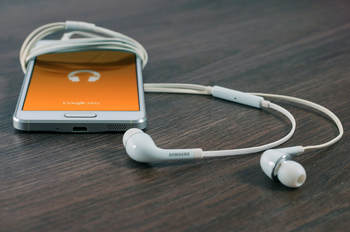 One of the best benefits that technology has given to students is to make music more convenient and readily available. From iPad apps that allow children to create digital tunes on the go to the immeasurable catalog of music available for free on the Internet, modern technology has established a world in which people can explore music from anywhere. In the classroom, this means that teachers can quickly and affordably use the Internet to show students the work of a wide range of musicians throughout history. Students can listen to and be inspired by the work of composers who lived hundreds of years ago, or discover music genres from countries they have never visited. Of course, the Internet is also an excellent resource for finding educational videos and games that help drive home lesson plans without the need for budget increases, which many schools cannot afford. Additionally, the Internet gives students access to websites and tablet apps that enable them to experiment with music composition long before they’ve developed the ability to play a traditional instrument. Some of the best apps that help children learn about composition prior to mastering an instrument include Sound Drop, SoundPrism, inHarmony, Dropophone, and Pattern Music. 4. Technology enhances communication between teachers and parents.Though not directly related to the lessons that take place in a music classroom, one important thing that technology has done for students is establish stronger lines of communication between teachers and parents. Research shows a connection between positive parent-teacher communication and student performance, and modern technology has made it easier for the two parties to communicate through email, classroom web pages or portals, webchat, video conferences, and social networking tools.
Children with parents who are involved in their education typically have better class attendance and behavior at school, and may be more able to see their music homework in a positive light. In addition, parents who have good communication with teachers are more likely to be familiar with the topics that their child is learning in class and can reinforce these lessons at home to bolster the child’s understanding of the material. No matter whether you’re a long-time musician, a new music student, or somewhere in between, people who are passionate about music often consider practice or performance an important part of daily life. However, travel can make practicing some traditional instruments difficult, leaving a musician on a trip without an outlet for creativity. If you are a musician who is planning to travel soon, but don’t want to sacrifice your ability to make music while away from home, the following six instruments are easy to take with you no matter where in the world you go. UkuleleA lightweight, hollow-body instrument commonly associated with the Hawaiian Islands, the ukulele has an appearance similar to that of a miniature acoustic guitar. It features four nylon strings and is usually made out of wood, though plastic models are also available. The ukulele comes in four sizes, with the 30-inch baritone being the largest and the traditional soprano being the smallest at just 20 inches long. The instrument is notable for being fun, inexpensive, and relatively easy to learn how to play. Hand drumsThere are many options for the percussionist who wants to take an instrument on the go. While they do not produce the same sound as the standard drum kit, hand drums like the West African djembe are a practical option for travel. Although traditional djembes are made from a goatskin stretched over a wooden body, a hardier, more functional option for the traveling drummer is a djembe made from fiberglass and equipped with a metal tuning key. Another ideal hand drum for the traveling musician is the mini cajon (Spanish for “box”), like those designed by the instrument company Meinl. While standard cajons are large enough for a drummer to sit on when playing, the miniature version from Meinl is just under 9 inches tall and almost 6 inches wide. These birch wood instruments have a warm tone and produce a crisp sound that make them ideal for accompanying other musicians on the road. Traveler guitarGuitarists of all ages can bring their craft with them wherever they go thanks to a modified version of the instrument designed specifically with the traveler in mind. One of the best acoustic options is the Backpacker guitar, made by C.F. Martin & Co. Available in both classical and steel string form, the instrument has a slimmed-down body design that makes it perfect for storing in a packed car or in the overhead compartment of a plane. Although the skinny body of the wooden guitar prevents it from producing the louder, fuller sound of a standard size acoustic, it has the benefit of weighing only two pounds, making it extremely portable and the perfect option to bring along on outdoor excursions. Alternatively, electric guitarists may be interested in the Ultra-Light Electric made by the company aptly named Traveler Guitar. At 3 pounds and just 28 inches long, the compact Ultra-Light produces a sound identical to a full-scale electric guitar and comes with a removable leg rest frame for functional lap playing. Musicians can pair the Ultra-Light with a mini amplifier and have the freedom to shred on the guitar anytime, anywhere. HarmonicaFor its size, the harmonica has a lot to offer the traveling musician as it spans three octaves and can play both single notes and chords. The typical beginner’s harmonica is the 10-hole diatonic type in the key of C—the version most often played in music genres like folk, blues, and pop. Though a harmonica needs to be in the right key in order to most effectively accompany other instruments during a song, these metal mouth organs are small enough to stuff in your pocket, making it easy to fit a set of them with a wide range of keys into a travel bag. OcarinaWhile many standard wind instruments like the flute and clarinet are already small enough to take on trips, they can be expensive to replace or repair if they are lost or damaged. For this reason, the ocarina is an excellent, economical option for a wind instrument player who wants to make music while traveling. Ocarinas are small, rounded vessel flutes with a total of 10 holes—two for the thumbs and eight for the fingers. They are made from plastic, terracotta, or even metal, and produce pure notes in a limited range. Some versions are highly decorative, and musicians may choose to wear them around the neck on a string for convenient carry. Your VoiceArguably the simplest and most often-forgotten instrument that musicians can take wherever they go is their voice. Through singing lessons and practice, musicians can learn to develop a controlled, melodic vocal tone welcome in any musical setting. Singing can also lead to a variety of emotional, social, and health benefits for the singer. Studies show that singing can strengthen the immune system, improve the body’s blood circulation, reduce stress, and even boost self-confidence. Additionally, singing in a group is a great way to make friends and enjoy the wonderful social aspect of music while on the road.
Being a professional vocalist is the dream of many amateur musicians around the world. While many people who are interested in this pursuit have a natural talent for singing, it takes more than a lovely voice to turn this dream into a reality. Listed below are 10 qualities and characteristics that every aspiring vocalist should have to reach the professional level. Enthusiasm for learningAspiring vocalists who aren’t willing to learn and develop their singing abilities are unlikely to find success in the music industry. While a singer may get lucky and earn a job by relying on his or her natural talents, vocalists tend to benefit more from an education in proper vocal technique and music theory. It’s recommended that people who are committed to forging a career as a professional singer take lessons from a vocal coach or study music at an institution of higher education. A great ear for pitch You can’t be a great singer if you lack the ability to sing in tune. Accomplished vocalists have an excellent ear for pitch, meaning that they can perfectly match the pitch of a tone that they hear—singing a note that is neither flat nor sharp. Though some singers are naturally gifted with an ear for music, others who wish to be professional vocalists can enlist the help of voice teachers to develop the ability to consistently sing notes in the correct pitch. Excellent breath controlSinging well requires more than the ability to sing in the right pitch. A professional vocalist must also work to develop excellent breath support to sustain strong, clear notes without faltering. Breath control can be developed when a vocalist trains in breathing techniques and correct singing posture, as well as through extensive practice. An ambitious attitude Professional singing is not for those who are afraid to take risks or ask for what they want. Vocalists who find success tend to be “go-getter” types who seek out opportunities to perform, rather than waiting around for gig offers to find them. Most singers will not find success without an ambitious attitude and the courage to ask for chances to sing. Receptive to new ideas Even when aspiring vocalists train extensively in their craft, it’s still important that they stay open to learning new things and entertaining new ideas while working in the industry. When performing, singers need to work with other musicians, and having a narrow-minded view of the genres and styles that you will perform can severely limit professional opportunities. Vocalists at the professional level should experiment with different styles of music to be more versatile and have the capacity to work with musicians from all areas of the industry. This will increase their chances of finding success. Open to criticismNo matter how much natural talent you have, you should always remain open to feedback. The opinions of professionals and other well-intentioned people who take the time to listen to your demos can help you gain new insights on the strengths and weaknesses in your performance. Though not all criticism is warranted or worth paying attention to, professional vocalists must learn to recognize constructive criticism and apply it in order to make themselves even better performers than before. Self-assurance While the ability to take constructive criticism as a vocalist is important, so too is an innate self-assurance and belief in your singing abilities. Confidence about your talents will not only help you more readily accept criticism, but will also reduce pre-show anxiety and help you project self-assuredness during performances, leading to better reception from audiences. Overall, professional vocalists must learn to love their own voice through self-acceptance and extensive singing practice. Self-discipline People who become professional singers have self-discipline. A vocalist must be strongly committed to regular practice and maintain a strict voice care regimen to ensure that they keep their vocal cords in good condition. A standard voice care regimen should include warm-ups before every singing practice and performance, keeping the vocal cords hydrated, getting enough sleep, and avoiding harmful substances that irritate the throat tissue, like cigarettes. The ability to work in a teamVocalists do not work alone. Being a singer requires collaboration with a wide range of music industry professionals, including instrumentalists, songwriters, technicians, and producers. To function effectively in their role, vocalists must value teamwork and be respectful to the people who help them give great performances. Limitless patience No matter how much talent vocalists have, they should not expect to find success without hard work and time. Patience is a necessity for anyone who wants to sing professionally, as progress often goes slowly. The important things for all aspiring singers to remember are to keep the vocal cords healthy, continually look for ways to improve, and to enjoy themselves along the path to success.
By the time children reach the age of 10, many of them will be able to learn how to play some of the bigger brass and woodwind instruments that were physically unsuitable for them before. Not only are instruments from the brass and woodwind sections a unique and entertaining choice for children who want to play music, they can also help growing kids develop better hand-eye coordination, learn better breath control, and increase their confidence. Additionally, the band atmosphere in which many students practice at school gives children the opportunity to socialize and make new friends with similar interests. Listed below is a helpful guide to the popular brass and woodwind instruments available to young musicians. Brass InstrumentsBrass instruments are known for their loud, bright tones. To play a brass instrument, a musician uses his or her lips to create a vibration against the mouthpiece, which is then amplified through the instrument’s metal body. Brass instruments are used in a wide variety of music genres, but are especially notable for their place in jazz, marching bands, and professional orchestras. The following are among the most popular brass instruments for children to learn. TrumpetThough there are several different versions of the trumpet, the most commonly played is the B-flat trumpet. The standard range of the trumpet spans the F-sharp note below C4 to the B note two and a half octaves higher. The notes are manipulated by a musician using three piston valves located on the instrument’s top. Trumpets are arguably easier to learn how to play than other brass instruments, and a reasonably good quality trumpet can be purchased for a beginning student at an affordable price. French horn The French horn is often referred to simply as “the horn” in orchestral settings. It is among the more difficult of the brass instruments for young students to learn. Because of the way that the instrument is designed, horn players are much more likely to play the wrong notes, and performing without cracking or hitting a wrong note requires precision. Despite its difficulty, the French horn is celebrated for its rich, beautiful sound, and plays a distinct and important role in orchestra performances. TromboneThe trombone is unique among brass instruments because the player uses a slide to create different pitches rather than valves. The most commonly used version of the instrument is the tenor trombone, which plays in the key of B-flat, though the sounds it produces are one octave below the B-flat notes played by the standard trumpet. Tuba The tuba is by far the largest instrument in the brass family, and accordingly, it plays the lowest notes. The instrument is made from a single long, metal tube that can range in size from nine to 18 feet, with the longest tubes creating the lowest sounds. The standard version of the tuba is played while the musician is sitting down, with the instrument on his or her lap, though specially designed tubas are used in marching bands. Woodwind InstrumentsIn contrast to the brass section, players create music on a woodwind instrument through one of two ways. For reed instruments in the woodwind family, a player produces notes by blowing through a mouthpiece equipped with a strip of thin material known as a reed. The reed, which may be made from materials like wood, plastic, metal, cane, or synthetic materials, is responsible for creating the vibrations that produce a sound, rather than the musician’s lips. For flute instruments in the woodwind family, sounds are produced when a musician blows air across the edge of the instrument’s mouthpiece. The following woodwind instruments are among the most popular for children to play. FluteOf all the instruments in the woodwind family, the flute is the highest pitched, and creates a sound similar to that of a whistle when a player blows air across the top of the instrument’s tone hole. It is an extremely popular instrument for young musicians. The most commonly used flute in bands and orchestras is the soprano flute, which often plays the melody part in an orchestral performance. Flutes are a great choice for student musicians because they are widely available and easy to transport to and from classes. Clarinet The clarinet family comprises several reed instruments that range from the small, high E-flat clarinet to the large contrabass, which plays deep, low notes. The most commonly played clarinet is the soprano version, which produces notes in B-flat. The clarinet is typically made of wood with metal keys covering holes that span its length, though some clarinets are built from plastic, plexiglass, metal, or other synthetic materials. It is a popular choice for beginner musicians, though it may take young children some time to learn how to cover the instruments’ holes, some of which are not entirely covered by the keys. Saxophone Though made of brass, the saxophone is considered a woodwind instrument because it is played through a mouthpiece equipped with a reed. The four most commonly used members of the saxophone family are the soprano, alto, tenor, and bass versions, with the most widely-played being the alto and tenor. Like instruments in the brass family, the saxophone can often be heard in jazz and big band music, though it also has found use as a unique component of rock groups in recent years.
|
Photo used under Creative Commons from Marina K Caprara

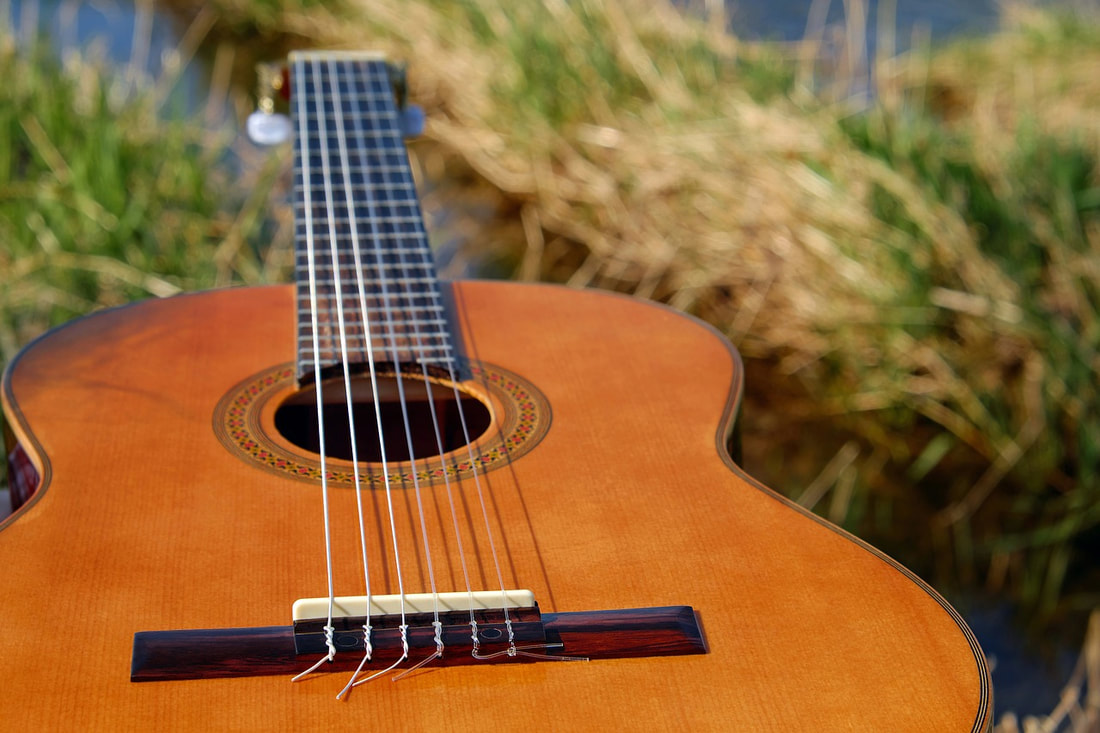
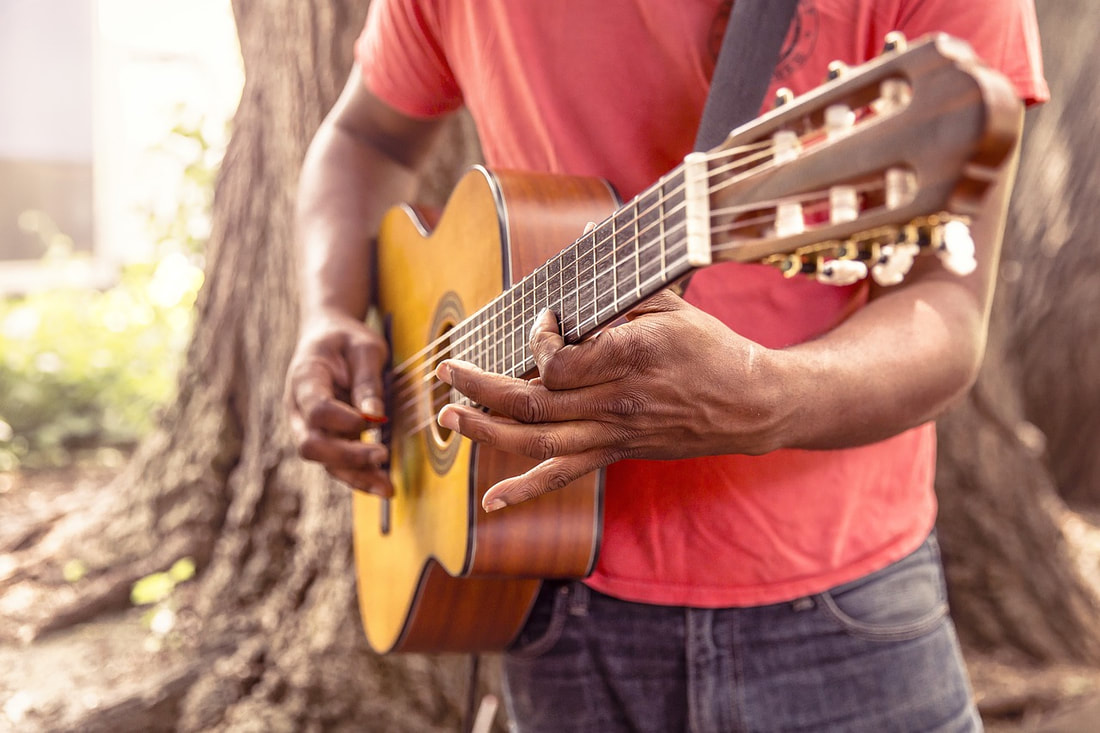
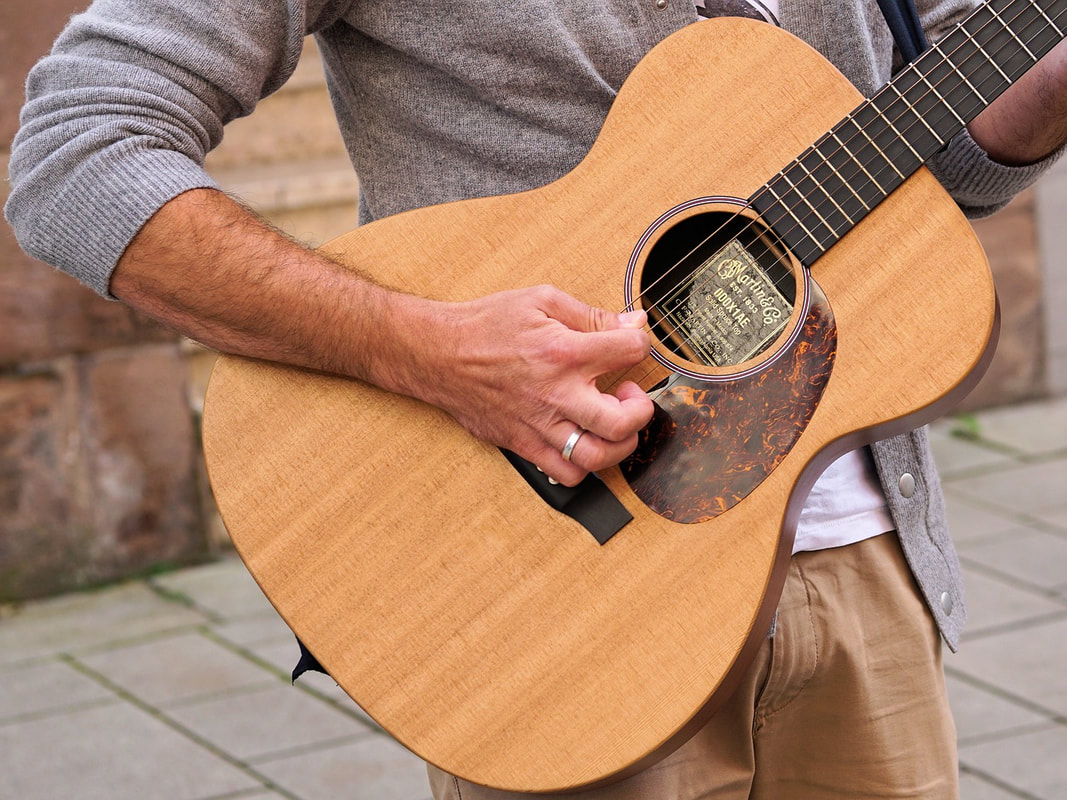

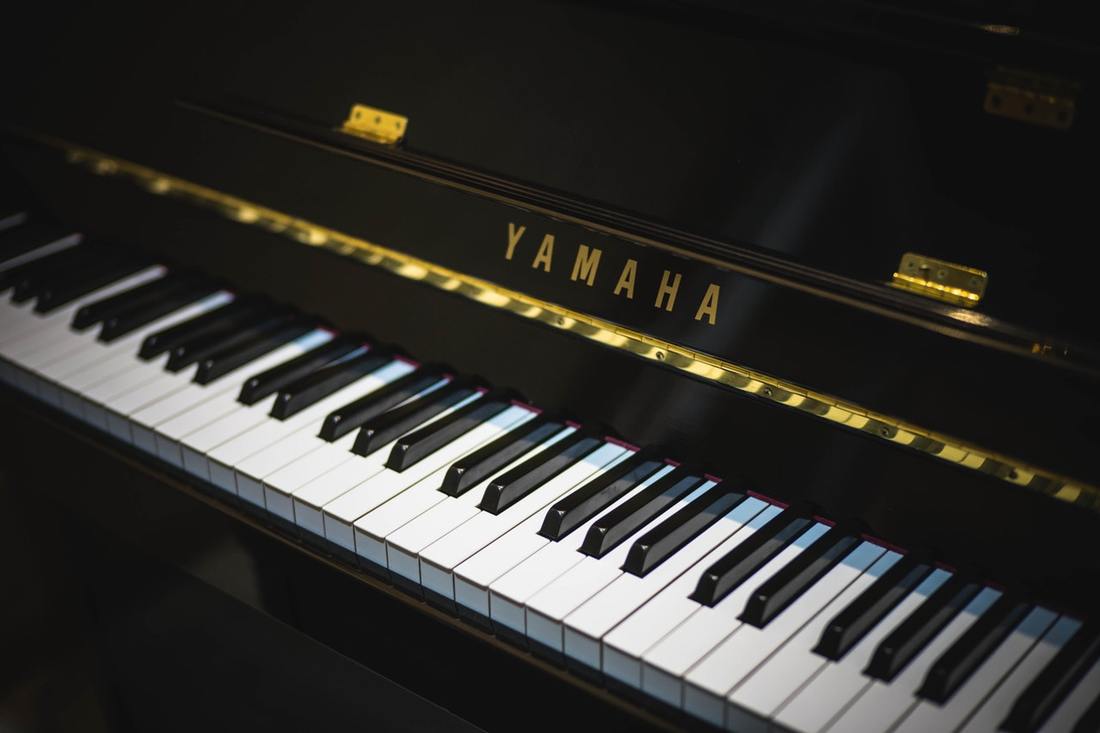
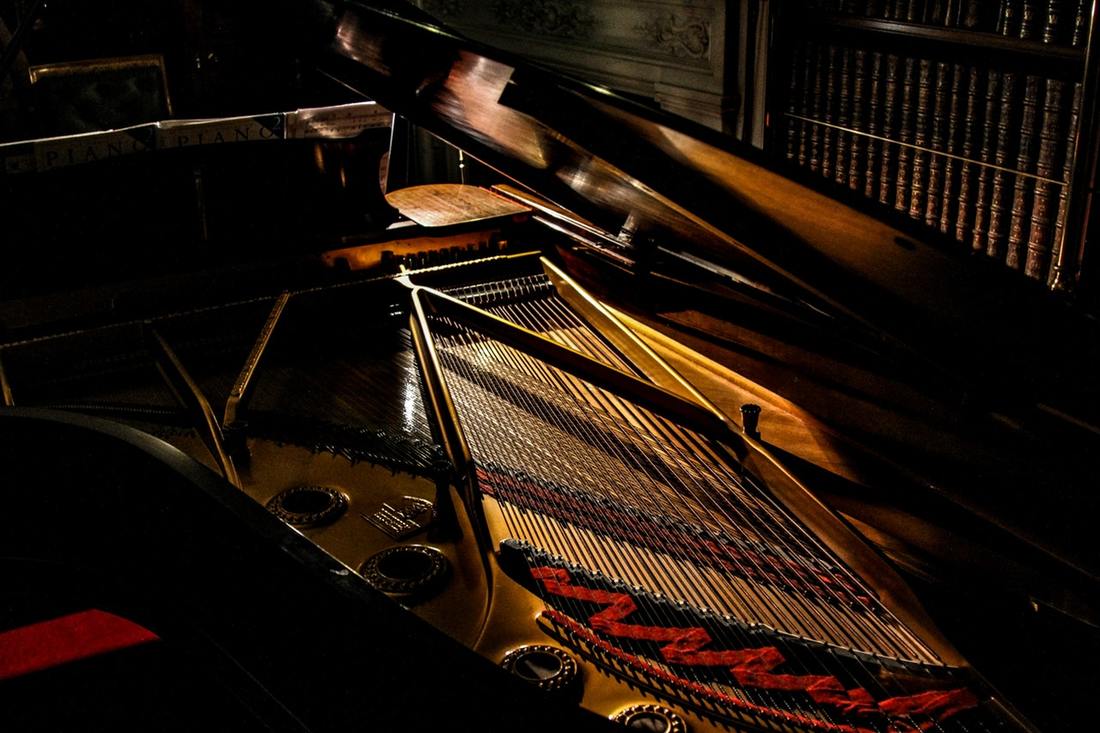
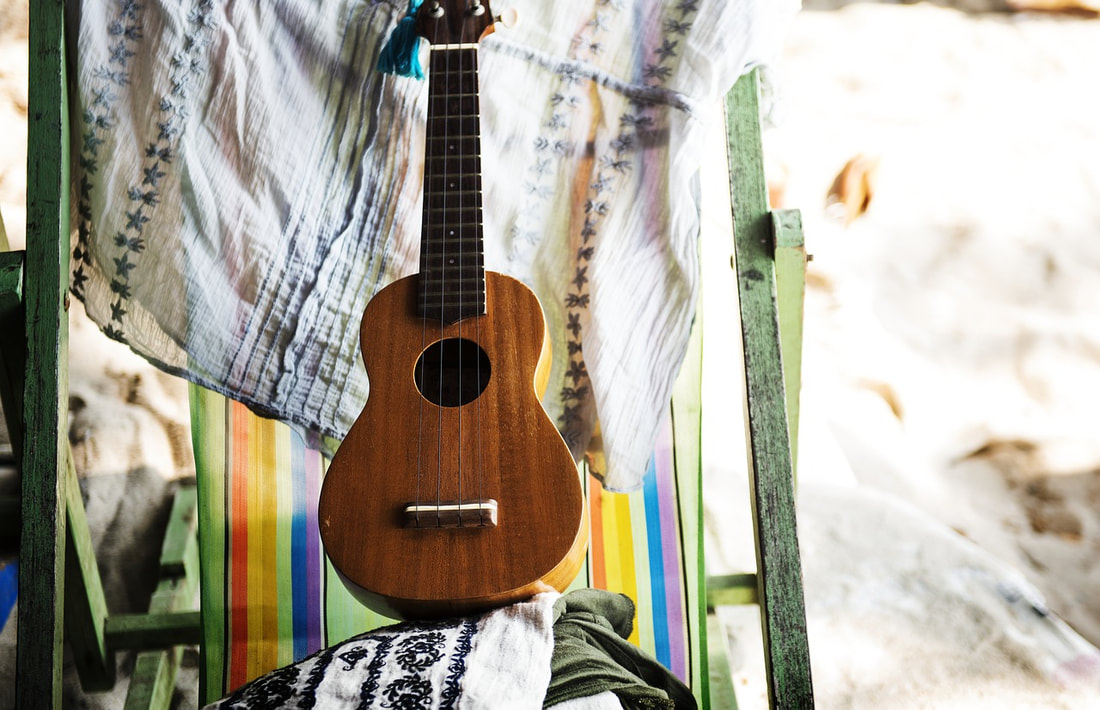
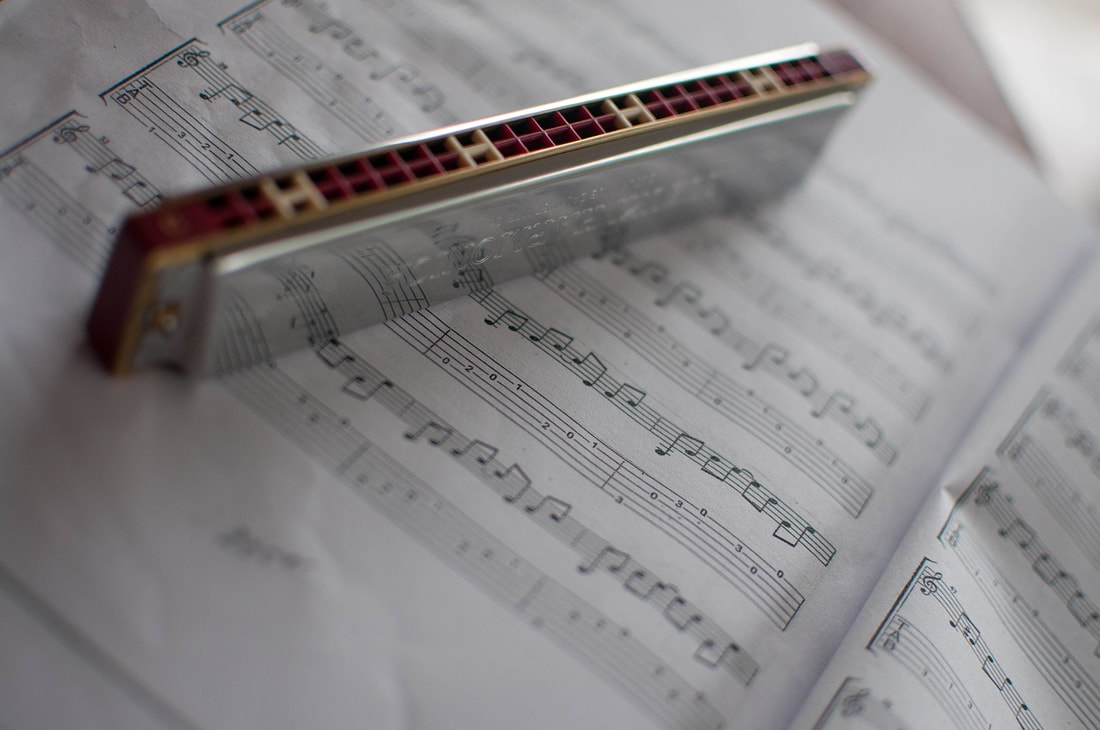



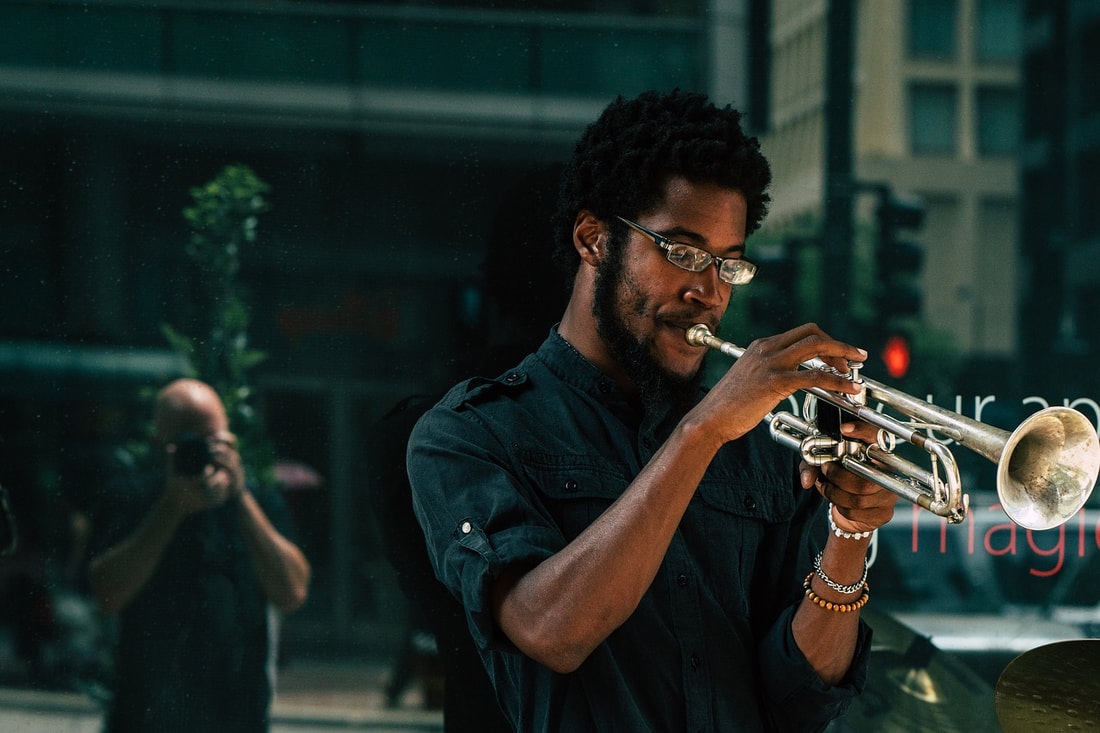

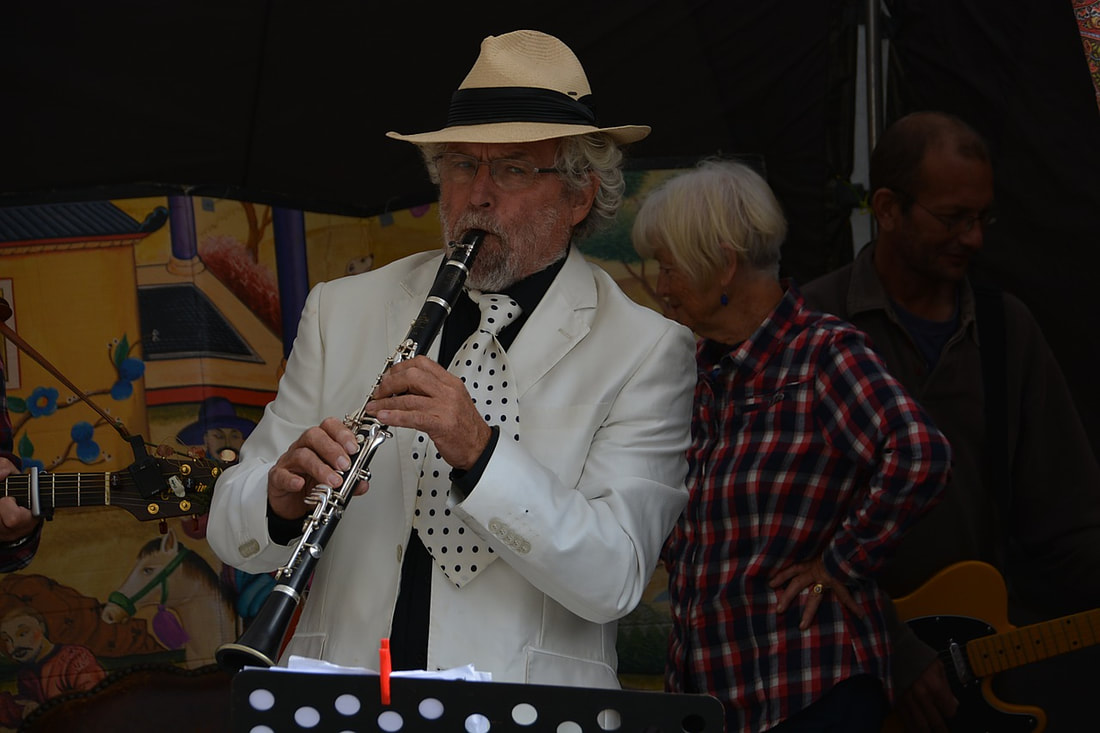
 RSS Feed
RSS Feed
